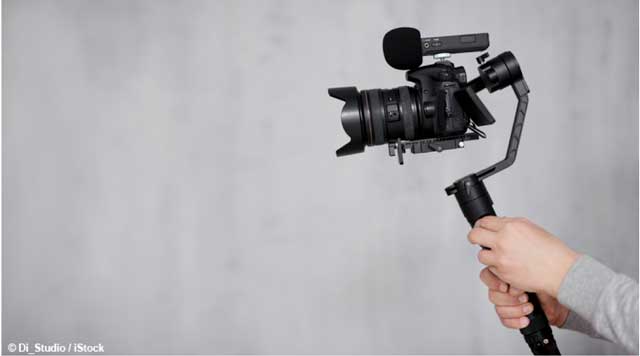Steam rose from the coffee pot and the sunrise glistened off the bay as we pulled away from the dock, with the whole crew ready for an exciting day of fishing. After a great day on the water and conducting interview segments with my client, the captain of a fishing charter business and his happy customers, the experience reminded me how important proper stabilization is for capturing quality video clips for projects.
As you can imagine, getting stable footage on a rocking boat can be a challenge, but it’s essential for quality work. And a reputation for quality work is what landed me this gig, getting paid to spend the day on a fishing trip.

There’s an exception to most any rule, but unless you’re re-enacting a plane crash, filming from within a fast-paced car racing down a bumpy dirt road, or making a horror movie, most video clips work best with proper and adequate stabilization.
I’ve found there are three main ways to achieve the necessary stabilization while capturing video content. Let’s take a closer look into each and maybe you can use this information to help achieve more quality video clips while you’re out and about shooting stock video, working for a client, or capturing footage for your own YouTube channel.
1. Tripod
The first type of stabilization and one of the best ways to guarantee capturing quality and stable video content while working from a stable foundation is using a tripod. It may take a bit of practice to work efficiently with a tripod, but once you spend a little time getting to know your tripod, it will work like an extension of your body and you’ll be glad you have it along in your kit.
Tripods come in different sizes, materials and with a few different features. Understanding the size and weight of your camera gear before you purchase is important. You can use a small table top tripod for your smartphone captures, while you’ll need a stronger, sturdier tripod when using a DSLR setup.
The different material options will dictate the weight and sturdiness of your tripod and this can be important depending on how far and how often you will carry it with you. Lighter is typically more costly, but also more comfortable for your longer days of shooting. One of the features recommended for a video shooter is a video pan/tilt style head for your tripod as it will give you the most flexibility while shooting video content. My tripods are used the most during interview sessions, capturing footage of landscapes, or while self-documenting for my YouTube channel.
2. Electronic gimbal
Sometimes a stable foundation to work from doesn’t exist and an electronic gimbal could be a great option for you. In today’s world with advancements in technology, the electronic gimbal has become much more affordable and there are different models made for different size camera systems. You can purchase a small, lightweight gimbal made for a smartphone or you can purchase a larger and more sophisticated gimbal for your heavier camera systems. Again, understand the size and weight of your camera system before making a purchase.

Gimbals like this let the camera rotate on three axes to keep stable.
Working from a boat or from inside a fast-paced car on a bumpy dirt road as mentioned above are great examples of where an electronic gimbal can be of benefit. Personally, I often work from boats and I can say my electronic gimbal paid for itself with the very first fishing video I created. I never leave home without it.
3. Handheld
The third and most common (but not most stable) way to capture video is handheld. Most folks use this technique without much thought to how shaky the video content will appear. Many of today’s newer cameras include a feature called in-camera stabilization, but operator technique can have a lot to do with how good or bad the footage ends up. There are also features within today’s editing software to help overcome the shaky footage, but be aware, it’s not always a good fix.
When I don’t have a tripod or electronic gimbal available, I’ll try to find a way to set the camera on a solid and stable surface, hit record and remove my hands from the camera to capture the footage. If this isn’t available, I’ll handhold my camera as a last option. If you must handhold, a little tip would be to capture the video clip in slow motion mode if available on your camera. If you slow down footage, you’re also slowing down any movement, such as camera shake from handholding. This can help make a video clip a bit more enjoyable to view for your audience.
Whether using a tripod, electronic gimbal or handholding your camera while capturing video content, practice and correct technique will help you achieve the quality and stable footage your viewer will enjoy. I hope this information and tips help you capture the most stable and highest quality video footage possible. Have fun out there.
